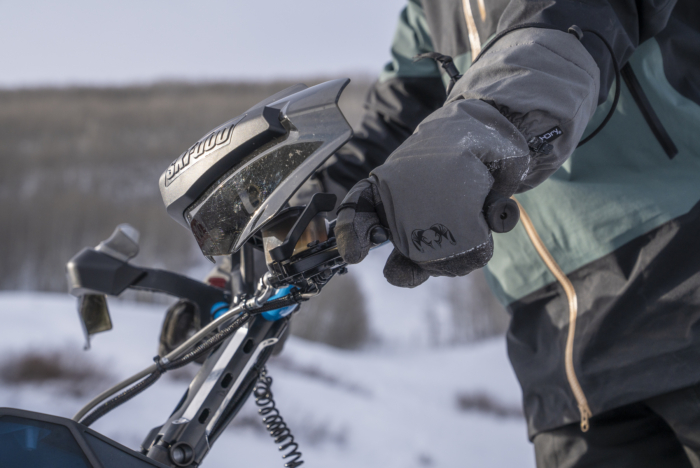Oyuki, a Niseko-based outfitter most famous for its Japow-inspired gloves and mitts, collaborated with optics and helmet heavyweight Smith on a capsule of limited-edition gear this winter.
The collaboration centers around Smith’s new helmet (the lightweight Method), the cylindrical Squad MAG Goggle, and Oyuki’s irreverent Shaka Mitts. Oyuki and Smith also made sure to include a balaclava in the lineup (a midweight iteration with GORE-TEX Infinium).
Each piece of gear shares the same stellar art — snowy, Niseko landscapes and detailed depictions of “yōkai,” supernatural spirits and monsters central to Japanese folklore, painted by muralist Mike Shankster.
As a professional gear tester, I do my best to approach each assignment objectively, but I’ve got to be honest. It was impossible not to nerd out on this collab. Oyuki makes some of my favorite gloves — the Pep Fujas pro model, in particular, is a flawless, downright sexy trigger mitt that perfectly marries form and function.
There’s also the lightweight Nikko GORE-TEX Infinium Mitts, and the 3-Layer YamaPro Mitts I use during sub-zero storm days. (Check ‘em out if you haven’t already.)
And, of course, Smith makes some pretty popular goggles. The Japanese yōkai touch cranked my stoke levels to 11.
Needless to say, I had high hopes for this collaboration, and the gear exceeded my expectations. Why? I had the opportunity to test the full collection during a powder-blessed trip to Oyuki’s Hokkaido hometown, being the first outside of the Oyuki and Smith brand to get my hands on the limited-edition drop. High stoke, but also, high stakes when it comes to testing.
In short: Out of the whole collection, my focus was on the helmet and goggles in testing, as well as the functionality and durability of each piece of gear. This collection is far from just about style — it’s got to perform like any other top gear from each brand. After Hokkaido, I continued testing upon my return home to Lake Tahoe, during a series of storms that resulted in some of the deepest, best days of riding of my life. Oyuki in particular bills its gear as built for pow — “oyuki” actually translates to “big snow” in Japanese — and I definitely scored the conditions this gear is intended for. Below, I’ll break down my thoughts on the gear in the collab, but if you’re pressed for time, I’ve got three words for you: snag the lot.
Oyuki x Smith Collaboration Gear Review

- Materials: In-mold construction, polycarbonate shell, EPS foam, zonal KOROYD, MIPS
- Certification: CE EN 1077
- Audio compatible: Yes
- Removable earpads: Yes
- Removable goggle strap lock: Yes
- Weight: 19 oz. (size medium)
Pros
- Lightweight
- Resort and backcountry ready
- Compatible with a variety of goggles
- Very affordable
- Comes in 4 sizes
Cons
- Not the best ventilation
- No dial for size adjustment
A Helmet Surprisingly Ready for Backcountry Missions

Smith Method Features & Fit
MIPS and Safety
Goggle Compatibility: Near-Universal
- Style: Cylindrical
- Fit: Medium/large
- Lens: Everyday red mirror, low-light storm rose
- Lens system: Magnetic, locking lever
- Weight: 5 oz.
- Price: $250
Pros
- Classic cylindrical style
- Excellent peripherals and optics
- Solid venting
- Secure lens interchangeability system
Cons
- Frame can be on the big side for some folks
- Higher price point
- Only one lens color choice for the collab
Goggle Visibility and Clarity

Lens Tech, Fit, and Helmet Compatibility
Pros
- Cheeky, unique mitt style encourages throwing shakas
- Surprisingly functional dexterity
- Mid-weight insulation is warm enough for most days on the hill
- Chairlift conversation starter and fun
Cons
- Not as warm as regular mitts
- Not as dextrous as gloves or trigger mitts
A Trigger Mitt in Reverse

Mitten Functionality
Oyuki and Smith Gear: Conclusion















